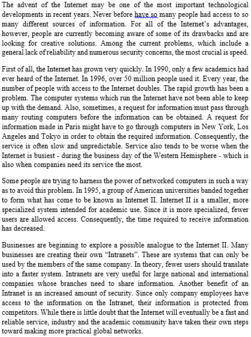V.4. Read the following passage and select the correct answer to each of the following questions.
Paleo-Indian refers to the first migration of people to the Americas sometime prior to the last glaciation around 10,000 years ago. Archaic refers to the period from 8,000 BCE (before the common era) to 2,000 BCE when many but not all societies across the Americas developed horticulture and agriculture. The estimated development of horticulture and agriculture vary for different parts of the Americas.
The formative stage refers to the period of 1,000 BCE to 500 CE (common era) in which, in addition to horticulture/agriculture, societies developed pottery, weaving, and permanent towns with ceremonial centers. These categories and dates were first postulated in the 1950s. Contemporary archaeological data now tells us that the estimated dates of these developments can be off by 1,000 years or more.
Further, the original peoples of the Americas had technology such as pottery and weaving before they developed horticultural, if they ever did. Such technologies are not dependent on horticulture or permanent settlements. So, while these time frames are not supported by current data, the terms Paleo-Indian, archaic, and formative are still used to describe the resources strategies of American indigenous peoples.
(Adapted from "Native Peoples of North America" by Susan Stebbins)
Question 95: When did Paleo-Indian migrate to the Americas?
A. around 10,000 years ago B. before 10,000 years ago
C. sometime around 11,000 years ago D. exactly 10,000 years ago
Question 96: Which statement is TRUE according to the passage?
A. Paleo-Indian are people who first migrated to the Americas.
B. Paleo-Indian are NOT people who first migrated to the Americas.
C. Paleo-Indian lived in the Americas in the archaic period.
D. Paleo-Indian already develop horticulture and agriculture before they moved to the Americas.
Question 97: When was the archaic stage?
A. between 8,000 BCE and 2,000 BCE B. from 10,000 BCE to 2,000 BCE
C. from 10,000 BCE to 8,000 BCE D. between 1,000 BCE to 500 BCE
Question 98: How long did the archaic stage last?
A. 6,000 years B. 4,000 years C. 10,000 years D. 10,000 years
Question 99: ______ societies in the Americas practiced horticulture and agriculture in the archaic stage.
A. All B. Many C. Some D. Few
Question 100: Horticulture and agriculture are developed at ______ periods in the Americas.
A. similar B. different C. the same D. identical
Question 101: The common era is used to refer to ______.
A. the formative stage B. the archaic stage
C. the pre-historic stage D. the historic stage
Question 102: What did the societies in the Americas in the formative stage develop?
A. horticulture and agriculture B. pottery and weaving
C. both of the above are correct D. none of the above is correct
Question 101: The categories and dates of the societies in the Americas were first suggested in ______.
A. 1,000 BCE B. 2,000 BCE C. the 1950s D. 1,000 years.
Question 102: The estimated time frames of the developments of the first societies in the Americas can be ______ different from the actual time frames.
A. over 1,000 years B. 900 years
C. 1,000 BCE D. 2,000 BCE
Question 103: Contemporary archaeologists suggested that the first societies in the Americas developed pottery and weaving ______they developed horticulture.
A. after they developed horticulture. B. when they developed horticulture.
C. before they developed horticulture. D. as soon as they developed horticulture.
Question 104: Which early technologies do not depend on horticulture and permanents settlements to develop?
A. pottery and agriculture B. pottery and weaving
C. weaving and agriculture D. pottery and ceremonials centers
Question 105: Which terms are used to describe the strategies that the original peoples of the Americas used to provide themselves with resources?
A. Paleo-Indian, formative, and archaic B. horticulture and agriculture
C. pottery and weaving D. archaic and formative stages


1 B
2 D
3 A
4 D
5 C